DevOpsDays Amsterdam 2024
- 10 minutes read - 2058 wordsOnce again, I’m sat at Schipol Airport typing up my thoughts about a few days of refreshing Dutch DevOps Goodness! Ok, I admit one or five alcoholic beverages might have been involved too. This was my first DevOpsDays and it did not disappoint.
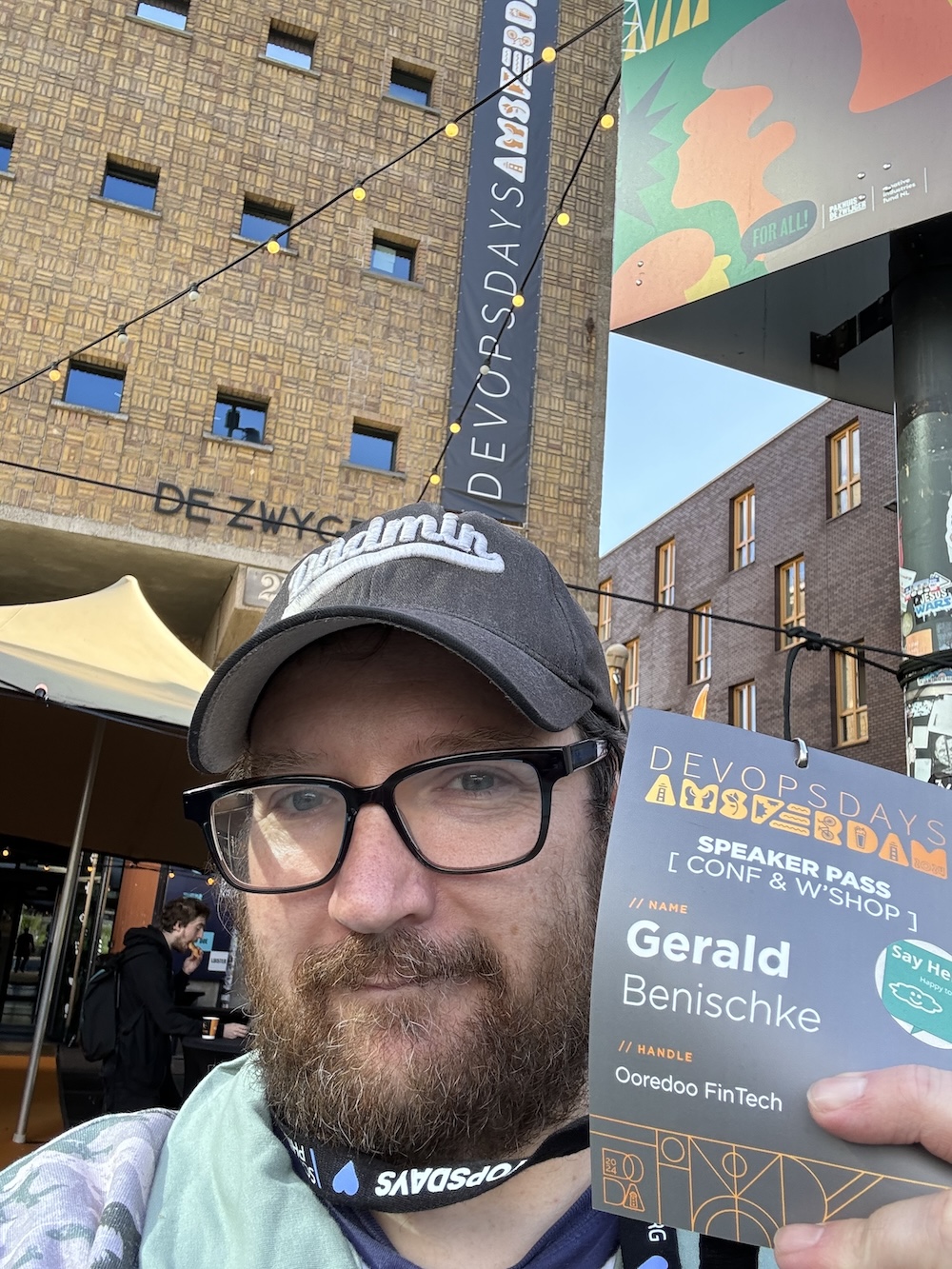
My day started at 3am to catch a flight at 6am but because I was still awake at 1:30 and had decided sleep is for wimps, I arrived a little bit wired. Nothing a great coffee from the Coffee TukTuk couldn’t sort out. In a way, this first experience of arriving slightly after the conference had already started (for some reason the border checks back at the airport was being done manually) and resetting myself for a busy few days by taking some small steps involving a very agile (coffee) delivery method would make a great metaphor of what was to be ahead.
By the way, if you found the last paragraph a little bit convoluted, I still refuse to use AI for writing my blogs, even though we couldn’t stop talking about it at conference. More on that later.
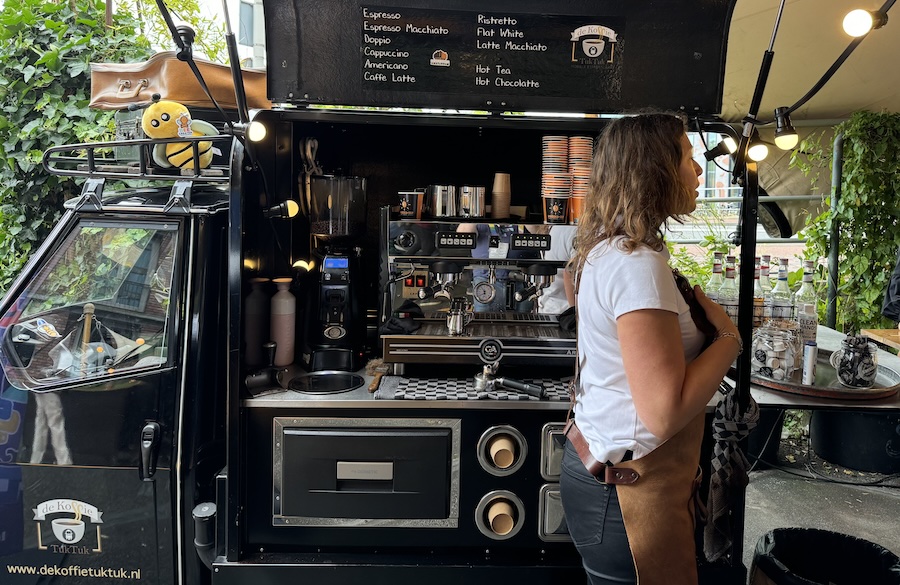
Workshops
Wednesday was workshop day. For my first one, I went to see Rushil talking about how Google does SRE
and while Site Service Reliability Engineering was not new to me, it was a really great introduction to all the
different service level indicators, objectives and agreements. And I very much liked how Rushil gave a live demo and
challenged the demo gods to make his site fail. Well, he also used a load testing tool to make the site unresponsive.
Brave! And great to watch when it all (intentionally) went wrong!

Rockstar Developers
Next, I felt like a rockstar as I was ushered into the little studio and did an interview with Joep talking about my “Love Letter to Legacy” talk.
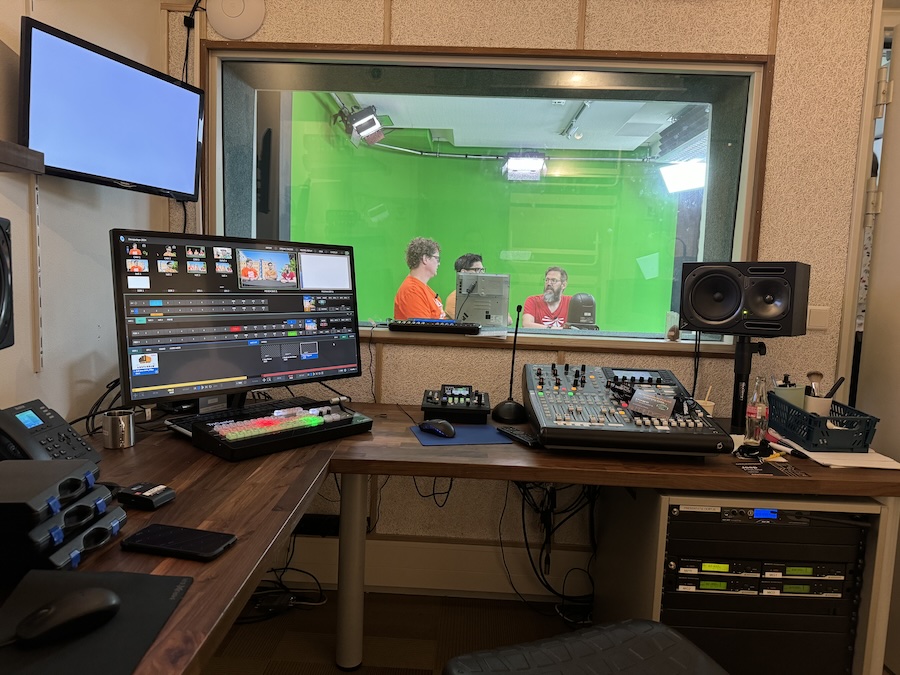
Legacy is the new black
Next on the menu was a really fun workshop where Wouter and Suzanne gave us a preview of his new Escaping Legacy book. The premise is simple:
- in order to extricate yourself from legacy code, you have to understand the old system
- too often that can only achieved by mapping out the system and (re)creating tests
- heat maps, story maps and example mapping can help.
We got some hands on experience with the concepts, which were made easy because we had to put some stickies in order, made somewhat easier by the stickies having numbers on them. Laziness is a virtue!
I actually got an early version of the book from Wouter a few months, and really really enjoyed it, so grab it, I found it a great read even if you’re not the eponymous product owner!
AI
Next, we had a terrific trio of googlers (Rania, Fahd and Christiaan) talk to us about how AI is going to change everything in the software lifecycle. I have to admit, that I did a bit of sceptical sniping, but as we got talking after, I could see my resistance toward GenAI soften a little bit. The example on how a model was used to ingest 40 years of PubMed research and produced diagnostic suggestions with references to papers to be used by human clinicians is quite a compelling argument that there is something to it.
It’s not the first time that AI got a mention. I did rib them ever so slightly when they asked during their presentation they asked “what does AI stand for?” and I was first off the mark with “Apple Intelligence” as the obvious choice.
I still think that “slap AI on everything” is not the right solution, but it has its uses. Later on during the conference, when I was talking to sponsors, I had an interesting demo from Elastic where they showed off their capability to create log ingesting pipelines using a few snippets of English…
Getting butterflies
On day 2, I started the day by finding a spot that looks the perfect place for where Netflix must have come up with the concept of the paved road:
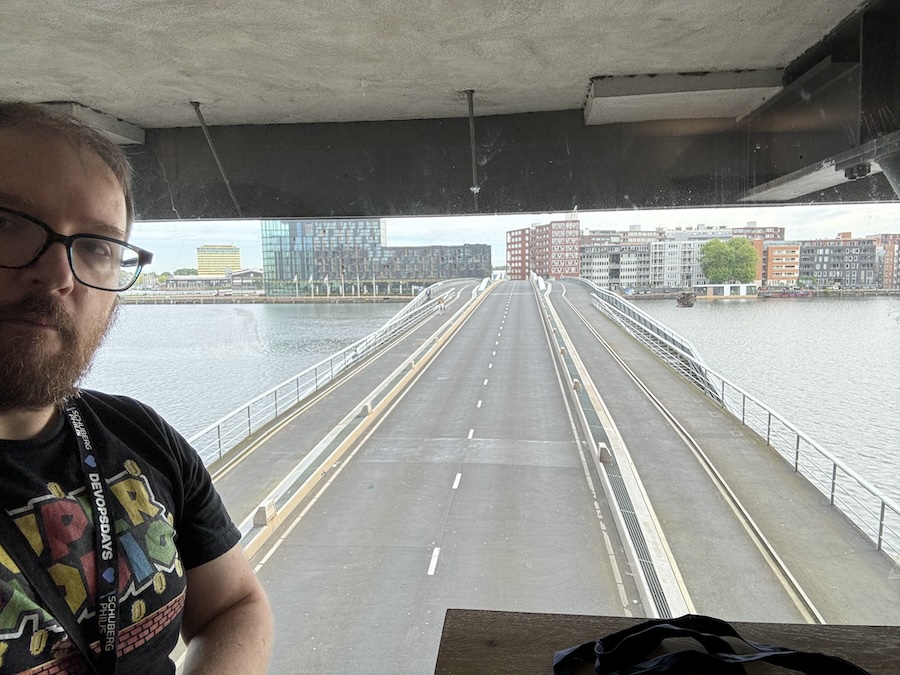
It is a beautiful location, where you can place your laptop at a desk, sip a coffee and contemplate two levels of guard rails, before you crash into the drink. Obviously I’ve totally made it up, but this is now my new go-to picture when I want to describe the “golden path”…
The real reason for conferences
While I’m being slightly irreverent, the following snap illustrates the real reason for conferences:
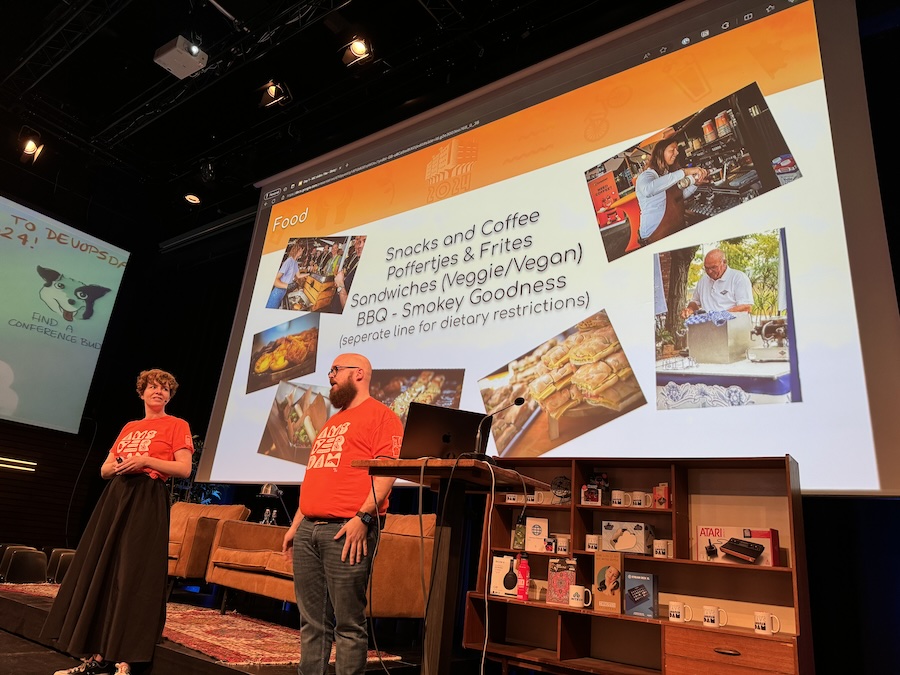
And the food was amazing!
Can you tell us a bit more about the talks though?
I really enjoyed Sara’s keynote about meritocracy and glass ceilings in tech. One idea that was quite eye-opening to me was the thought that successful people are often successful because of the opportunities that they can grab. The comment that
if women displayed the same assertiveness as men in talking about their achievements, they face backlash, if they don’t then they risk being ignored
made me want to stand up a shout “smash the patriarchy and glass ceilings”. And I feel like that not just because I’m a father to my daughter, but also recognise that diversity is strength. Grrr, I can feel my blood boil just thinking about it. And it’s even worse that discrimination is everywhere. As a middle-aged, middle-class white bloke, I feel it only right to be angry about it, even if I’ve not experienced it myself.
DevEx
Next up was a cool talk by Jeremy which reminded us about the road we’ve been on in terms of IDEs:
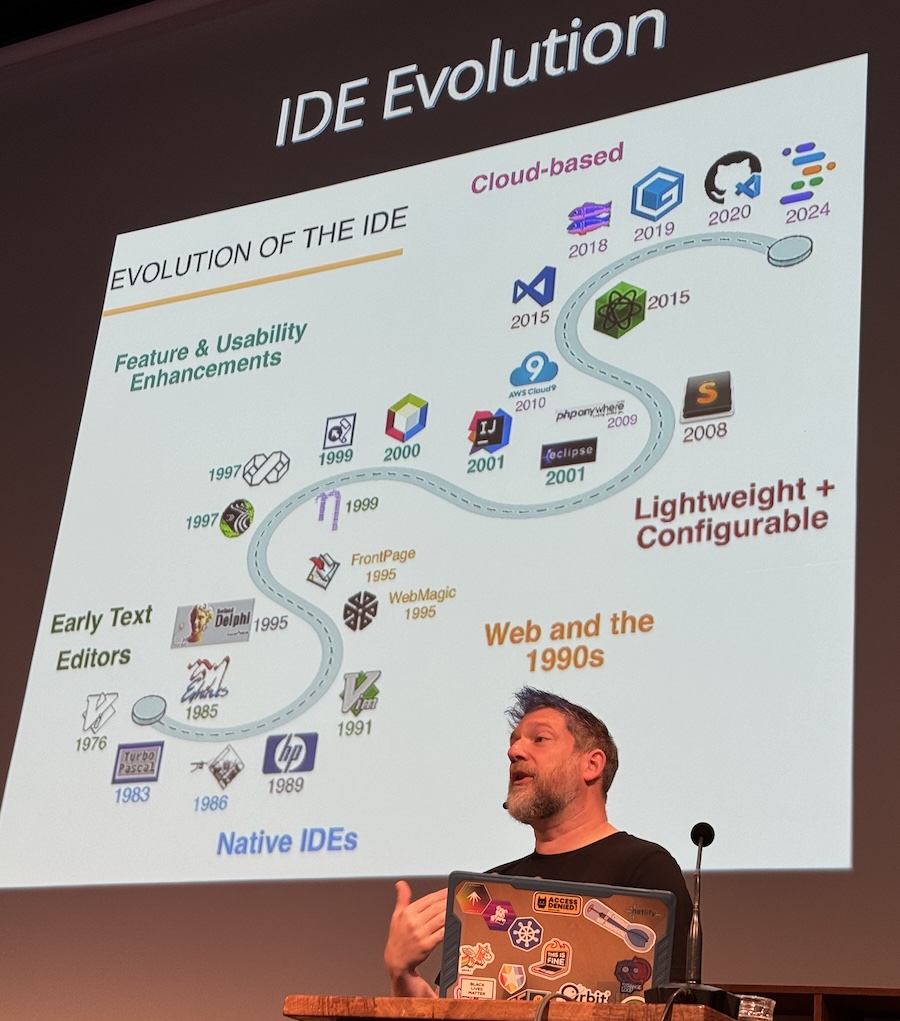
Obviously everyone has their own favourite tool stack(s), his reasoning for choosing nano as his editor of choice was that he wanted an editor that he could quite without throwing the computer out the window. At the risk of rekindling a religious war, this is how you exit vi, right?
>>> what is the most obscure way of exiting vim?
One of the most obscure ways to exit Vim is by entering the
command mode and typing in `ZZ`. This command saves and
exits the file, similar to `:wq`.
>>> how do you enter command mode?
You can enter command mode in Vim by pressing the Escape key.
I can just feel myself being replaced by AI already - the above was created using the phind-codellama local model…
And I also really enjoyed Coté’s talk about developer productivity. One reason I just have to applaud is the use of “that McKinsey diagram” but using it and giving it sensible meaning. There’s no use trying to optimise the developer build cycles or trying to optimise how fast someone can “type teh codez”, when usually there is so much hand over time wasted when going from development to QA to security to operations. That’s where the real focus should be. Reduce the hand-offs, remove the silos. Couldn’t agree more!
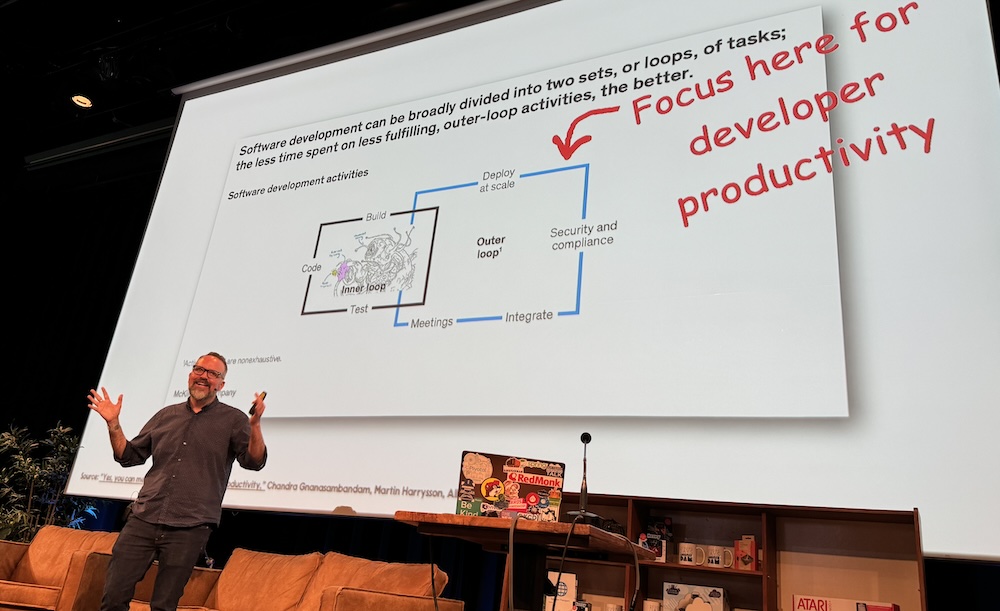
One of Coté’s proposed solutions is to go to the metrics buffet and try to find ways to incorporate Dora and Space to make devs happier. One of the most interesting slides measures the adoption of CI/CD, which as it turns out is pretty flat. That was surprising, I thought it was obvious that DevOps principles and agile development are the way forward in software development. I’ve experienced when it was working really well and also how frustrating it can be when it’s not working well.
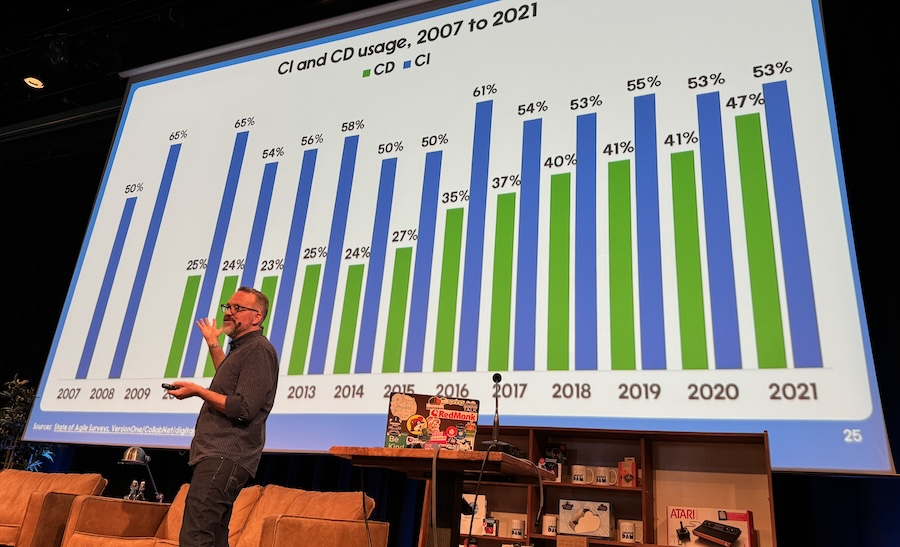
Maybe we shouldn’t be surprised. I know I heard a lot about flat hierarchies, holocracies, psychological safety, autonomous teams. I preached it too. But the reality is that letting go of control is a scary thing to do and requires an enormous amount of trust. And trust is something that can easily be lost, and hierarchies re-established. And it was somewhat sad but also a bit reassuring that not everyone works in an autonomous, psychologically safe nirvana ;-)
Ignite Talks
The ignite talks by Robin, Daniel, Heather and Marcel are probably best summed up as
A case against automation of baking while running against walls to end civilisation
You had to be there…
My turn
When I found out that my talk would take place in the “Grote Zaal”, I internally protested
but but but, I thought you’d put me in a small room
But externally I said
that’s exciting!
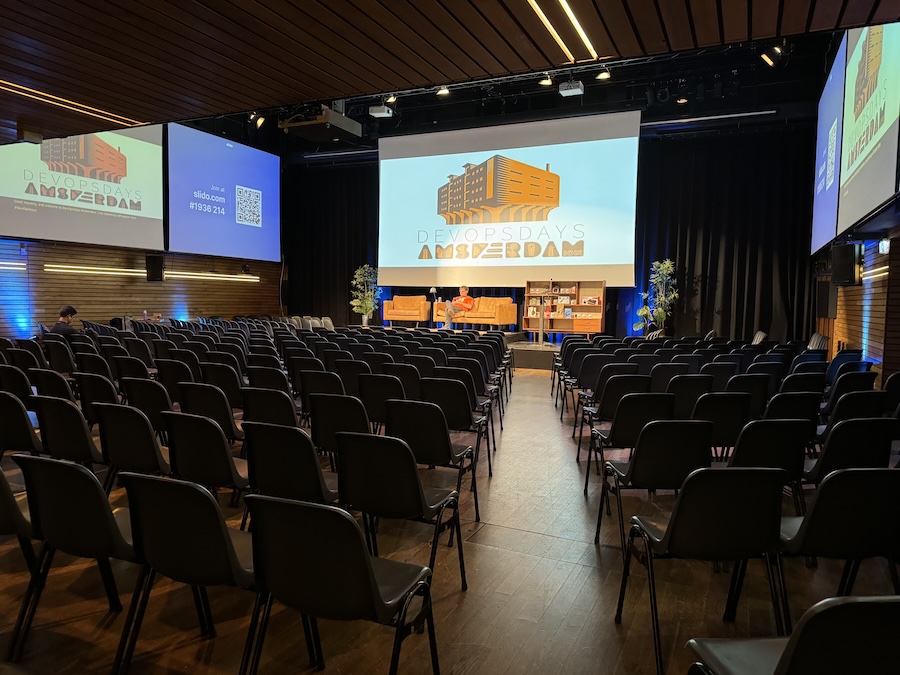
I thought my talk went well, hopefully some people don’t think legacy as a swear word anymore. It was really nice to have support from a Dutch contingent of friends sat in the front where I could see them! I guess this is my way of not so subtly suggesting if you know someone who might be nervous, give them courage by having Dutch friends there. I’m sure that’s what Dutch courage means, no?
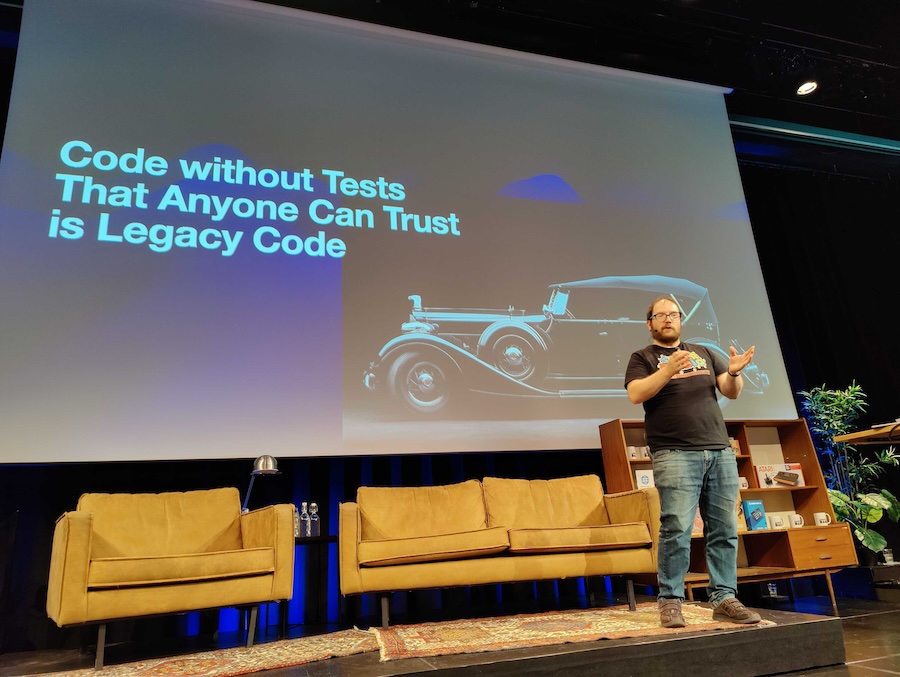
Beers and the DevOps Bassoon
My memory of the evening are a little bit hazy, there may have been some alcoholic beverages involved, and I’m not sure how the DevOps Bassoon was actually created but I’m sure Jeff and Gavin will know…
The final day
The last day kicked off with Sasha talk to us about failing to learn. A really interesting session on Growth mindset, fear and what we can actually do to help facilitate learning. Because you can’t actually teach anyone, you can only help them learn! There were a lot of themes in the talk that very much reminded me of psychological safety and how important it is. But connecting it to learning, and creating an environment where learning is easy makes it even more powerful!
Knowing too much, or overthinking, can actually inhibit learning:
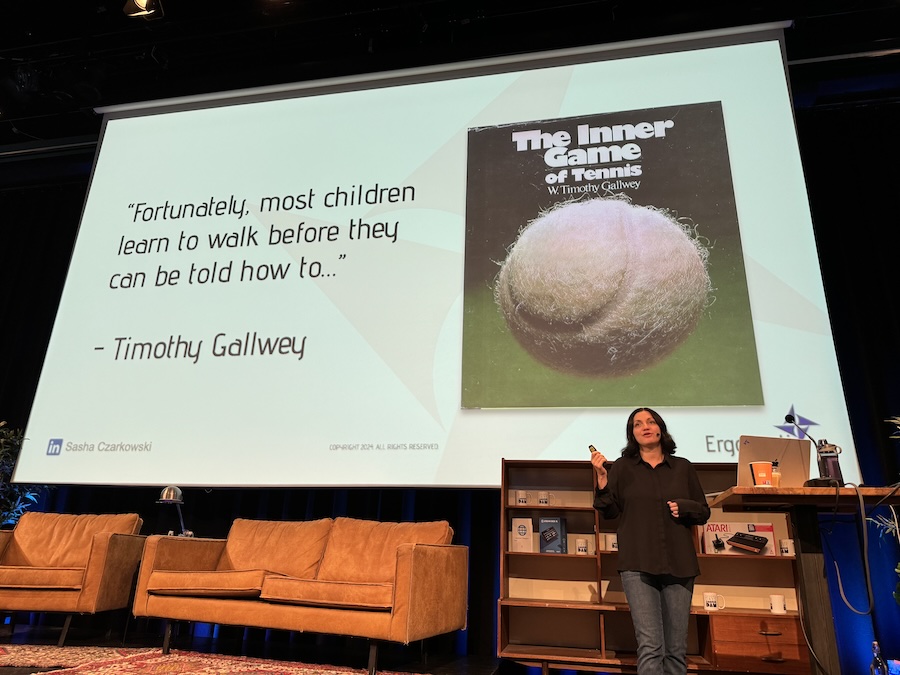
Nerd sniping
The next talk I went to was amazing: Katie described how fly.io had built a whole new way of developing software by using nerd sniping.
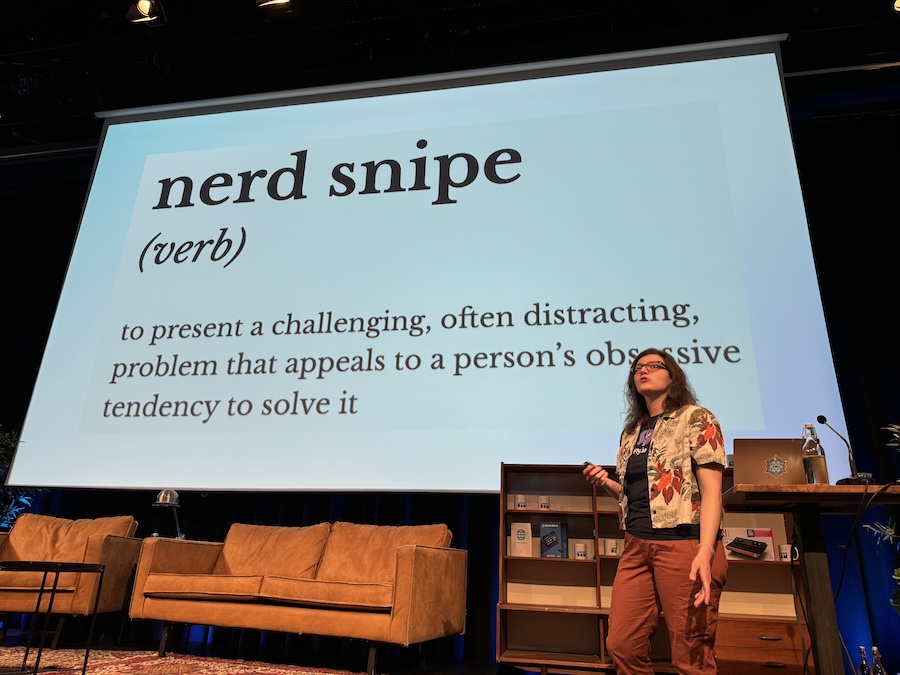
Actually, she lied and it’s still just based on the agile manifesto and all about giving people enough slack to work on interesting problems that provide value. Power to “People over Process”!
More AI
Yishai gave an interesting talk about GenAI and how to measure the impact. Having some way of tagging what code is generated and what is humanely written might be a good start. I also liked his question on whether all the organisations that will be using AI to generate 10 times as much code are ready for the sheer volume of code changes, processes, capacity of the pipeline and blockages for code review!
There and back again!
I really liked the story that Tyko had to tell. Picnic is an online supermarket, and they started in the cloud, then went hybrid and then went back to being 100% cloud native. It was a fascinating tale of how latency requirements on cyber-physical systems (the scanners that route the boxes only have 250ms to make a decision whether to go left or right) meant a hybrid solution was initially less risky. What was really cool is that they figured out that while their initial design was working, it also was a great example why hybrid isn’t such a good idea, because there was a lot of duplicated effort and extra cost in running their own hardware. So they went back to the cloud with a phased migration that was almost derailed by a hand-held scanner. Apparently the scanner didn’t like the extra HTTP redirect that they put in when they change the backend system. Instead of a DNS change, they redirected to the new URL, and the scanner that they were using to test, couldn’t handle redirects. Or in other words… “it’s always DNS”
I loved the story, it also drives home the point that it’s ok for designs and systems to change, and to not get the right solution on the first try.
How to talk to a non-techy
The last talk of the conference was by Amber who made us do work! We had to think of our own questions and figure out how to talk to non-techies. Being able to clearly articulate problems or concepts is really important. I think I managed ok, when I explained CI/CD to a minivan in about three sentences… (this makes sense if you were there)
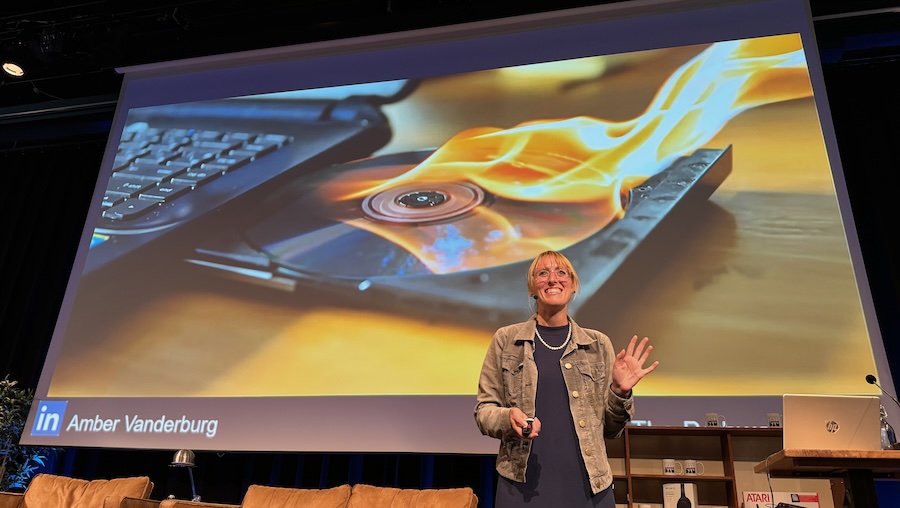
Conclusion
I hope this gave a good insight on what DevOpsDays Amsterdam was all about, and I haven’t even mentioned the amazing open spaces, or some talks that I missed out on, great food, great people, great chats and some idiot on telly blathering on about legacy:
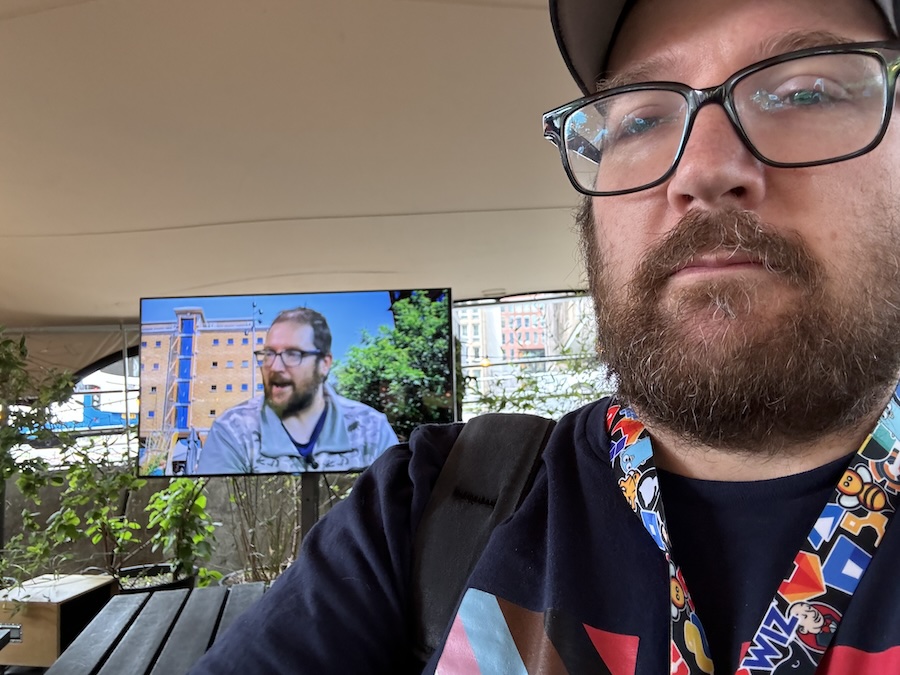
If you'd like to find more of my writing, why not follow me on Bluesky or Mastodon?